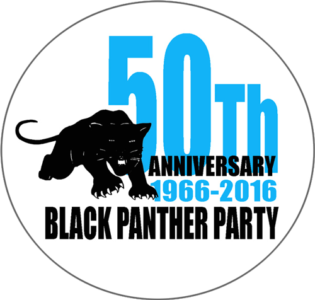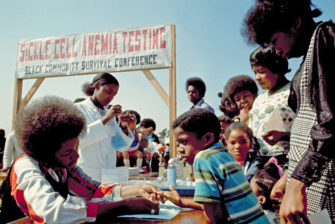What We Don’t Learn About the Black Panther Party—but Should

By Adam Sanchez and Jesse Hagopian, first published at the Zinn Education Project
Fifty years ago this month, the Black Panther Party was born. Its history holds vital lessons for today’s movement to confront racism and police violence, yet textbooks either misrepresent or minimize the significance of the Black Panthers.
 The first issue of the Black Panther newspaper, which at its height had a weekly circulation of 140,000 copies, asked, “WHY WAS DENZIL DOWELL KILLED?” Helping Dowell’s family demand justice in Richmond, California, was one of the first major organizing campaigns of the Black Panther Party. Anyone reading the story of Denzil Dowell today can’t help but draw parallels to the unarmed Black men and women regularly murdered by the police. The disparity between the police’s story and the victim’s family’s, the police harassment Dowell endured before his murder, the jury letting off Dowell’s killer, even the reports that Dowell had his hands raised while he was gunned down, eerily echo the police killings today that have led to the explosion of the Black Lives Matter movement.
The first issue of the Black Panther newspaper, which at its height had a weekly circulation of 140,000 copies, asked, “WHY WAS DENZIL DOWELL KILLED?” Helping Dowell’s family demand justice in Richmond, California, was one of the first major organizing campaigns of the Black Panther Party. Anyone reading the story of Denzil Dowell today can’t help but draw parallels to the unarmed Black men and women regularly murdered by the police. The disparity between the police’s story and the victim’s family’s, the police harassment Dowell endured before his murder, the jury letting off Dowell’s killer, even the reports that Dowell had his hands raised while he was gunned down, eerily echo the police killings today that have led to the explosion of the Black Lives Matter movement.Yet when we learn about the early years of the Panthers, the organizing they did in Richmond—conducting their own investigation into Dowell’s death, confronting police who harassed Dowell’s family, helping mothers in the community organize against abuse at the local school, organizing armed street rallies in which hundreds filled out applications to join the party—is almost always absent. Armed with a revolutionary socialist ideology, as the Panthers grew, so did what they organized around. They fought in Black communities across the nation for giving the poor access to decent housing, health care, education, and much more.
This local organizing that Panthers engaged in has been erased in the textbooks, yet it is precisely what won them such widespread support. By 1970, a Market Dynamics/ABC poll found that Black people judged the Panthers to be the organization “most likely” to increase the effectiveness of the Black liberation struggle, and two-thirds showed admiration for the party. Coming in the midst of an all-out assault on the Panthers from the white press and law enforcement, including FBI Director J. Edgar Hoover’s claim that the Panthers were “the greatest threat to the internal security of the country,” this support is remarkable.
The Textbook Version of the BPP
A few of the major textbooks don’t even mention the Black Panthers, while most give the organization only a sentence or two. Even the small number that do devote a few paragraphs to the party, give little context for their actions and distort their ideology.Textbooks often associate the Panthers with violence and racial separatism. For example, Teacher Curriculum Institute’s History Alive! The United States reads,
with violence and racial separatism. For example, Teacher Curriculum Institute’s History Alive! The United States reads,
 with violence and racial separatism. For example, Teacher Curriculum Institute’s History Alive! The United States reads,
with violence and racial separatism. For example, Teacher Curriculum Institute’s History Alive! The United States reads,Black Power groups formed that embraced militant strategies and the use of violence. Organizations such as the Black Panthers rejected all things white and talked of building a separate black nation.
While ignoring that the Panthers believed in using violence only in self-defense, this passage also attempts to divide the Panthers from “nonviolent” civil rights groups. The Panthers didn’t develop out of thin air, however, but evolved from their relationships with other civil rights organizations, especially the Student Nonviolent Coordinating Committee (SNCC). The name and symbol of the Panthers were adopted from the Lowndes County Freedom Organization (LCFO), an independent political organization SNCC helped organize in Alabama, also called the “Black Panther Party.” Furthermore, SNCC allied with the Panthers in 1968 and while the alliance only lasted five months, it was a crucial time for the growth of the Panthers.
The passage from History Alive! also incorrectly paints the Panthers as anti-white, erasing their important work building What We Don’t Learn About the Black Panther Party—but Should | I AM AN EDUCATOR:
